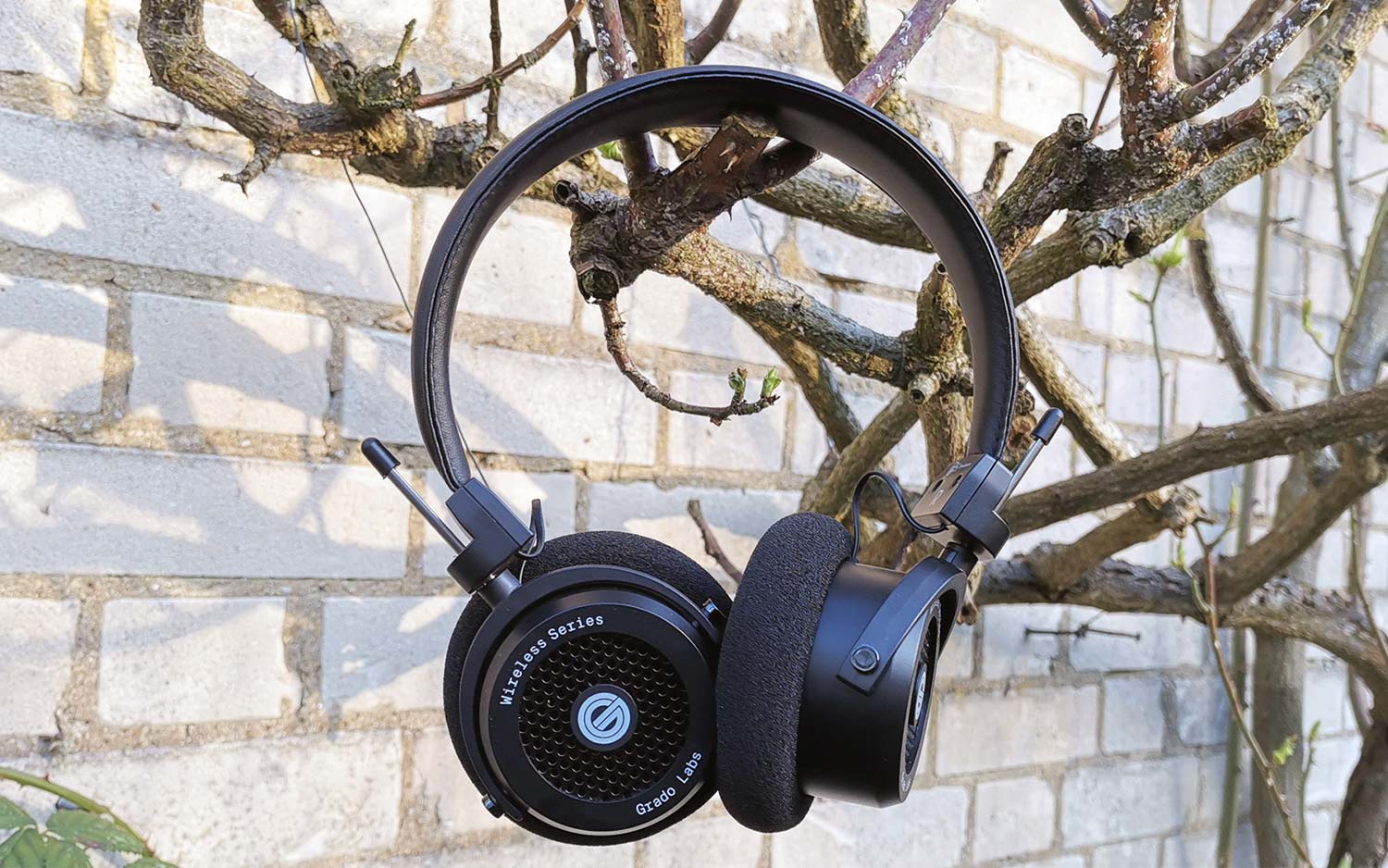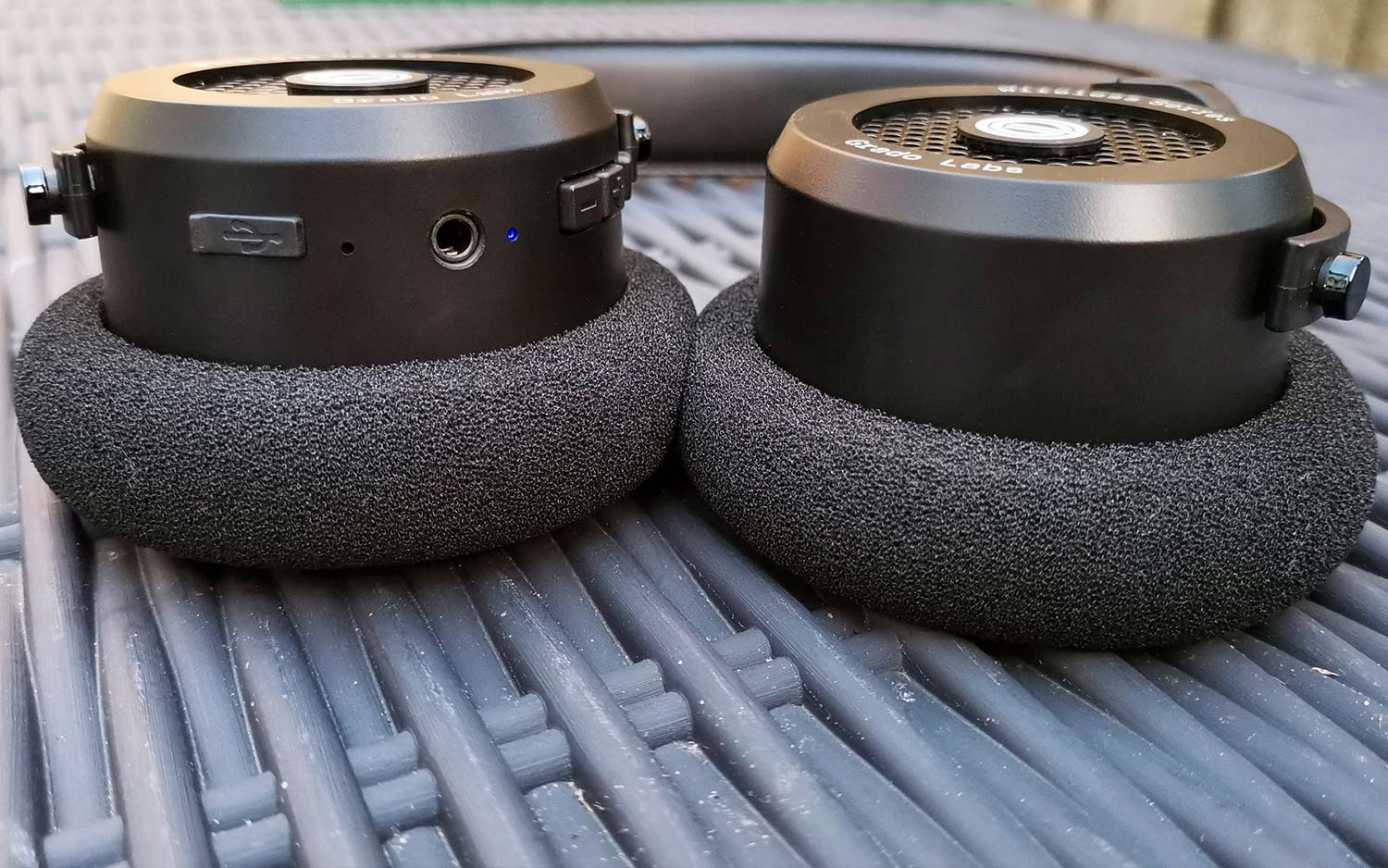Tom's Guide Verdict
Audio purists who want rich sound and reliable comfort in a no-frills package should seek out the Grado GW100.
Pros
- +
Spacious and well-balanced sound
- +
Clean, minimalist design
- +
Comfortable fit
- +
Solid frequency range
- +
Responsive controls
- +
Digital assistant support
Cons
- -
Extensive noise leakage
- -
Mediocre battery life
- -
Poor call quality
Why you can trust Tom's Guide
Grado Labs isn’t a name that rings bells in casual-listening circles, but for engineers, musicians and hipsters, it’s a sound staple. The 65-year-old, family-run company has been responsible for some of the coolest, retro-style headphones on the market. Grado's commitment to excellent sound quality has also been well-documented; many of their wired headphones have resonated with both critics and sound experts.
Now, the Brooklyn-based brand has its sights set on the wireless space. Sharing a design similar to its corded counterparts, the GW100 has emerged as a worthy, Bluetooth-enabled alternative that’s sonically built to compete against your favorite sub-luxury and high-end headphones.
Design
Grado prides itself on manufacturing headphones using traditional practices, which is evident in the look of the GW100. Rather than snapping multiple pieces together like most current headphone makers do, the company selects audio-friendly components and blends them to establish a quality build that doesn’t compromise sound.

The GW100 comes in black and is made from a mix of solid materials, including stainless steel, mylar, neodymium magnets, plastic and leatherette. Style-wise, the headphones basically are a wireless replica of the brand’s popular Prestige series, but with subtle improvements in detailing. All labeling is brushed on rather than engraved. The headband is padded up, while the ear cups are more reserved, swiveling halfway instead of circling around entirely.
Relying on such lightweight elements has its advantages and drawbacks. On the plus side, the headphones are slender and convenient for travel, and make for a conservative fashion piece. The casing around the ear cups feels solid, but scratches easily and won’t survive hard falls onto concrete. Tossing the headphones into your backpack might also put the headband at risk of breaking.
The packaging is arguably the flashiest thing about these headphones; they come in an all-white box with black lettering and the interior swaps the color scheme. A protective foam silhouette secures the headphones. Judging by the chic presentation, I had high hopes for a slender carry case, but was met with only an auxiliary cable and a micro-USB cable.
Get instant access to breaking news, the hottest reviews, great deals and helpful tips.
Comfort and Fit
At 6 ounces, the GW100 is one of the comfiest, most portable-friendly models in its class. You’ll be able to sport these for hours without feeling fatigued.

Breathability is a high point of the headphones, as the plush headband offers proper cushioning to relieve the scalp of unwanted pressure. The unit rests gently atop the head and feels comfier than the Fanstereo Studio43. The foam ear pads are far from sexy, have a scratchy feel to them, and attract lots of debris, yet they’re still cozy and provide ventilation for perspiring ears.

The key to achieving a pleasant fit is playing with the metal extenders. Setting the proper length will mold the headphones perfectly to your dome. Misaligning either side causes slippage, and you don’t want these headphones falling off your head. The extenders do stretch fairly wide and can accommodate bigger heads, if necessary.
Controls and Setup
Very few companies do multi-functional controls right – Grado is one of the exceptions. The GW100 makes call management and media playback practical by relegating all commands to a three-button scheme that most tech-illiterates can master in seconds.
MORE: Best Headphone Deals in March
Pressing down the power button turns the device on and off, while holding it for 5 seconds initiates pairing mode. Tapping it once will play/pause music or answer/end calls. The plus and minus buttons work similarly, controlling volume (single tap) and tracking navigation (long press), respectively. Each button is very tactile and registers commands with the slightest tap. On the left ear cup are the audio jack and charging port with protective flap.

Connecting the headphones is common practice: Enable pairing mode, turn on the Bluetooth on your laptop or smartphone, enter the Pair New Device menu, and choose Grado GW1000 from the available devices list.
Audio Performance
While I’ve tested numerous other headphones, I’ve never tested a Grado headphone; the GW100 makes me wish I had done so sooner. The units boasts a sound profile that resembles the design: clean and neutral. Bass, midrange and treble are well-represented, and vocals are prominent.

Grado integrated the same drivers used in its wired headphones, which are engineered to produce a "broad soundstage free from colorations." I felt this most on live jazz recordings. John Coltrane’s "Live at Birdland"album placed me front and center as the musician serenaded my ears with bright, lifelike performances. The lower-mids and highs were sharp, allowing me to take in the instrumental details of each record, from the snares to the hi-hats.
Pushing the bass levels up a notch, I jumped into Curtis Mayfield’s "(Don’t Worry) If There’s a Hell Below We’re All Going to Go" and became entranced by the record’s compelling lows. Reverberations were powerful, giving Mayfield’s monologue an echo effect that remained in the background until the full-on beat dropped. The GW100 did such a great job reproducing the song’s distorted bass line that I pitted them against the Sony WH-1000xM3, and was surprised by how much clearer the production sounded on Grado’s cans.

Not all bass-heavy content packs a skull-rattling punch on these headphones. The beat on DMX’s "Who We Be" sounded more dynamic and hit harder on the WH-1000xM3; it was milder on the GW100. Rock records fared similarly, particularly ones with dominant guitar riffs and layered drums like Green Day’s "Basket Case." Billie Joe Armstrong’s vocals were deflated and lacked the fiery delivery one comes to expect from the front man.
Plugging in the aux cable dids increase sharpness and the volume by about 30 percent. It’s clutch for listening to low-res audio files; granted, the boost in loudness may be excessive for listeners with sensitive hearing. You’ll want to keep the volume at the halfway point, which is like having the sound at max when in wireless mode.
Noise Neutralization
The GW100’s open-back headphone presents challenges. While it helps broaden the sound space, the tradeoffs are that it directs ambient noise into the ear cups and the audio leaks out in the process. Listening to music at mid-volume drew stares on the train, as young commuters scoffed at my selection of old-school hip-hop. Dropping the volume down a notch let me eavesdrop on conversations, but also pulled me away from the music. Having the TV on in the background was also distracting, especially when listening to podcasts.
Battery Life
The GW100 has a built-in, 320mAH battery that’s good for up to 15 hours of playback. This sounds paltry compared with higher-priced, on-ear units like the Solo3 Wireless (40 hours), but it’s on a par with others like the Bose SoundLink On-Ear Bluetooth Headphones (15 hours). Charging time is estimated at 2 hours.
MORE: Best Wireless Headphones Available Right Now
Having the headphones fully charged out of the box definitely earned Grado brownie points. I was able to rock out to my playlists for 6 hours daily, which translated to about 2.5 days, before recharging. That’s a day shorter than I had hoped for. As expected, listening at high volumes and wireless calling did drain the battery faster. But I was disappointed to learn there is no sleep function to preserve juice when the headphones are inactive, so I had to choose between disabling Bluetooth mode or powering them off.
Voice Assistant Support
Grado doesn’t advertise it, but the GW100 supports both Google Assistant and Siri to perform common tasks via voice commands. I stumbled upon this function when pressing the power button twice by mistake, which enabled the feature. The built-in mic picked up vocals extremely well; I jokingly whispered requests and was met with speedy responses.
Call Quality and Connectivity
Just because you can, doesn’t mean you should. Conversations on the GW100 sounded low and muffled on both ends. The background interference and lack of clarity were noticeable. My girlfriend described the audio as “tinny.” Raising the volume to max level made her voice audible, but only when I took calls in silent settings.

Grado opted for Bluetooth 4.2 with aptX instead of Bluetooth 5.0, which isn't a deal-breaker. Surprisingly, the connection on the GW100 was stronger than on most earphones that run the latest Bluetooth protocol. The cans carry a range of up to 30 feet, which seemed accurate during my testing. I roamed my apartment from room to room and enjoyed stereo-like sound without any dropout. Pairing is limited to only one device at a time, although switching from my phone to my laptop (and vice versa) was instant.
Bottom Line
From the phenomenal sound to the nostalgic design, the Grado GW100 is a love letter to the elite headphones of the 80s and 90s, only in wireless form. These cans don’t have the flash of Beats nor the premium aesthetics of Bose, but Grado’s throwback approach to design gives the GW100 a retro-chic that’s perfect for modern times.
I’m impressed by how well these headphones deliver clear audio across different frequencies, outperforming most on-ear models in its price range, while holding their own against sonic juggernauts like the WH1000xM3. Comfort and responsive controls are two other strong areas that showcase the headphones’ stable performance.
Hip-hop and rock lovers wanting more oomph on the bass end might want to consider Bose or Sony devices. But anyone who wants traditional-style headphones powered by dynamic drivers and spacious sound can save themselves some cash and spend less on the GWk100.
Credit: Regan Coule/Tom's Guide
A lifestyle journalist with an affinity for consumer products, Alex has over a decade of experience and has worked with popular publications such as Complex, Thrillist, Men’s Health, Gear Patrol, AskMen, and Hoop Magazine. He currently focuses on audio, reviewing the most coveted headphones in the market for both Tom’s Guide and Laptop Magazine.

